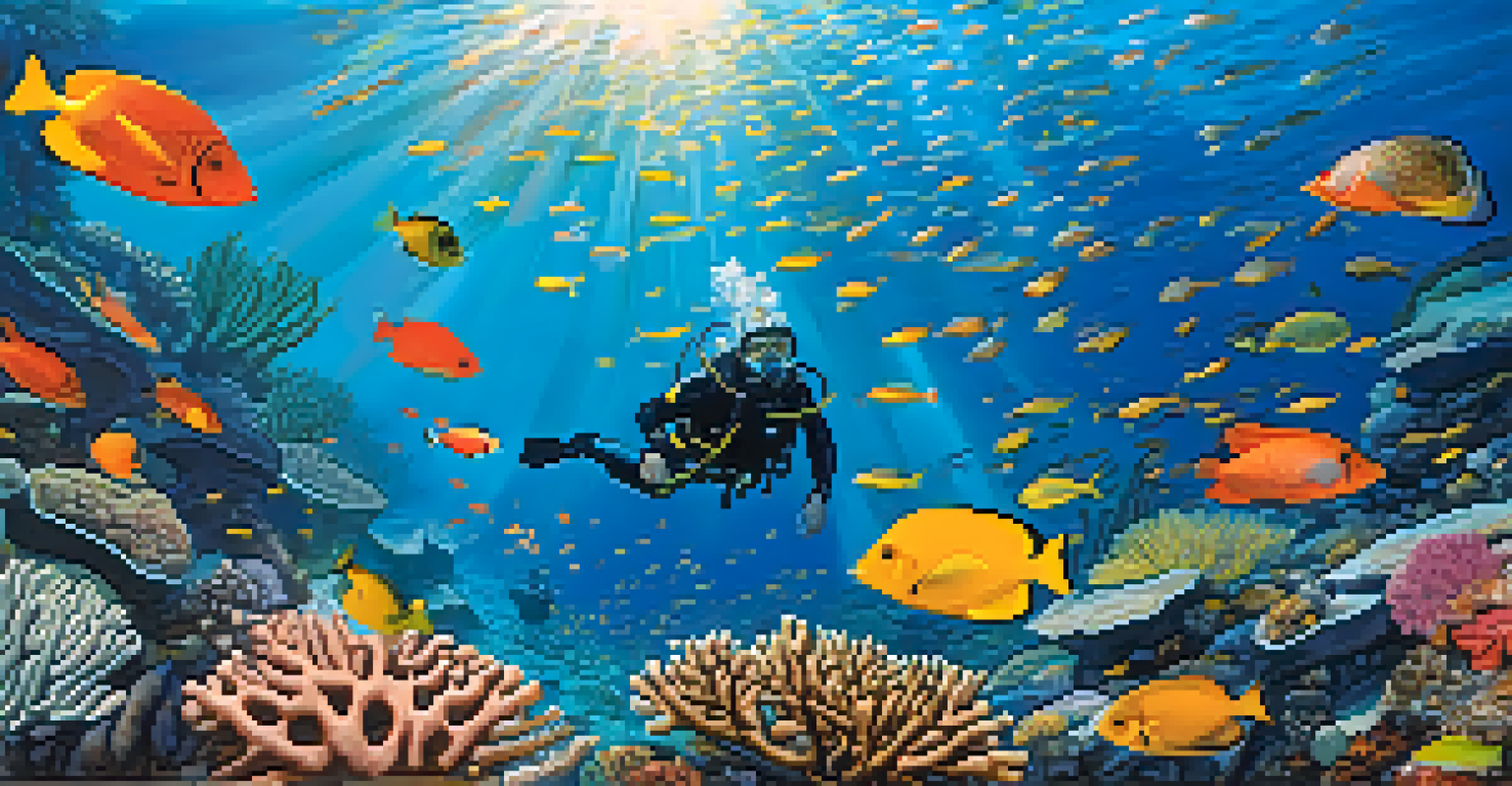Adventure Tourism: Balancing Thrills and Environmental Care

Understanding Adventure Tourism and Its Appeal
Adventure tourism is all about exploring the great outdoors while engaging in exciting activities. For many, it represents an escape from the everyday routine, offering opportunities like hiking, rock climbing, and white-water rafting. The thrill of these experiences often draws people who seek both excitement and a connection to nature.
The greatest danger in times of turbulence is not the turbulence—it is to act with yesterday's logic.
This type of travel has gained immense popularity in recent years, with destinations around the globe catering to adventure seekers. Think of it as a buffet of adrenaline-pumping activities that allow travelers to push their limits and enjoy breathtaking landscapes. It’s not just about the rush; it’s about creating lasting memories.
However, as the allure of adventure tourism grows, so does the responsibility to protect the environments that attract these adventurers. This delicate balance between thrill-seeking and environmental stewardship is crucial for sustaining the beauty and integrity of these natural landscapes.
The Thrill Factor: Why Adventure Tourism Excites
Adventure tourism offers a unique blend of excitement and personal growth that few other travel experiences can match. Activities like zip-lining through a rainforest or scuba diving in vibrant coral reefs provide a rush that can be hard to replicate. These experiences often challenge individuals, pushing them out of their comfort zones to discover new strengths.

The thrill often comes with a sense of freedom and liberation that many find intoxicating. Imagine soaring above the treetops or navigating through rugged terrains; it’s an exhilarating escape from daily life. This sense of adventure invites travelers to engage with their surroundings in a way that is both thrilling and transformative.
Adventure Tourism's Thrill and Growth
Adventure tourism combines excitement with personal growth, attracting those looking to connect with nature while seeking adrenaline-pumping experiences.
However, the excitement shouldn't overshadow the need for responsible actions. Sustainable practices can enhance the adventure without diminishing the thrill, ensuring that future generations can enjoy these same exhilarating experiences.
Environmental Impact: The Other Side of Adventure Tourism
While adventure tourism can be exhilarating, it can also have significant environmental consequences if not managed properly. Popular activities may lead to habitat destruction, pollution, and overuse of fragile ecosystems. For instance, hiking trails may become eroded, or marine life may suffer from overfishing and boat traffic.
Traveling – it leaves you speechless, then turns you into a storyteller.
It's essential to recognize that many of these thrilling activities can disrupt local wildlife and their habitats. The impact can sometimes be invisible, like the stress placed on ecosystems that aren’t immediately apparent to the naked eye. As travelers, we must be aware of these effects and strive to minimize our footprint.
By understanding these challenges, adventure tourism enthusiasts can make more informed choices that benefit both their experiences and the environment. This awareness is the first step towards creating a sustainable adventure tourism culture.
Sustainable Practices in Adventure Tourism
Sustainable practices are essential for ensuring that adventure tourism can thrive without compromising the environment. These can include using eco-friendly gear, supporting local businesses, and following established guidelines for wildlife encounters. Small choices, like choosing a local guide, can make a significant impact.
Engaging in responsible tourism means being mindful of how our actions affect the environment. For example, sticking to marked trails can help prevent soil erosion and protect native flora. Additionally, participating in conservation efforts or clean-up activities can enhance the adventure while giving back to the environment.
Environmental Responsibility is Key
As adventure tourism gains popularity, it's crucial to balance thrilling experiences with sustainable practices to protect fragile ecosystems.
Ultimately, sustainable practices allow adventure seekers to enjoy their experiences while preserving the beauty and integrity of nature for future adventurers. It’s about finding that sweet spot where excitement meets environmental care.
Supporting Local Communities Through Adventure Tourism
Adventure tourism can be an incredible way to support local communities, especially in remote areas where tourism is a primary source of income. By choosing local tour operators and services, travelers can help ensure that the economic benefits of tourism stay within the community. This not only strengthens local economies but also fosters cultural exchange.
When travelers engage with local guides, they gain invaluable insights into the culture and environment that they might miss otherwise. This interaction can enrich the experience, making it more meaningful and memorable. Supporting local businesses also encourages sustainable practices, as these operators often have a vested interest in preserving their surroundings.
Ultimately, adventure tourism can create a symbiotic relationship between travelers and locals, where both parties benefit. This connection reinforces the idea that we are all stewards of the environment, working together to promote sustainable tourism.
Regulations and Certifications for Adventure Tourism
As adventure tourism continues to grow, regulations and certifications are becoming increasingly important. These frameworks help ensure that operators adhere to sustainable practices and prioritize safety for both participants and the environment. Certifications can range from eco-labels to industry-specific standards, providing guidelines for responsible tourism.
By choosing certified operators, travelers can feel more confident that their adventures are environmentally friendly and ethically conducted. This not only enhances the experience but also supports businesses that prioritize sustainability. In an industry where choice is abundant, certifications can play a crucial role in guiding responsible decisions.
Support Local Communities Through Travel
Choosing local operators in adventure tourism not only enriches travel experiences but also strengthens local economies and promotes sustainability.
Awareness of these regulations empowers travelers to make informed choices, leading to a collective effort in promoting sustainable adventure tourism. After all, when we choose wisely, we contribute to the preservation of the incredible places we love to explore.
The Future of Adventure Tourism and Environmental Stewardship
Looking ahead, the future of adventure tourism hinges on our ability to balance thrill-seeking with environmental care. As more people seek outdoor experiences, the industry must adapt to prioritize sustainability. This may involve innovative practices, such as utilizing renewable energy sources or developing eco-friendly accommodations.
Additionally, the rise of technology can play a pivotal role in promoting responsible tourism. Apps that help track environmental impact or provide information on sustainable practices can empower travelers to make better choices. The evolution of adventure tourism may very well depend on our collective commitment to preserving the natural world.

Ultimately, the future holds promise, provided we approach adventure tourism with a mindset focused on sustainability. By embracing both excitement and environmental stewardship, we can ensure that our love for adventure does not come at the cost of the planet.